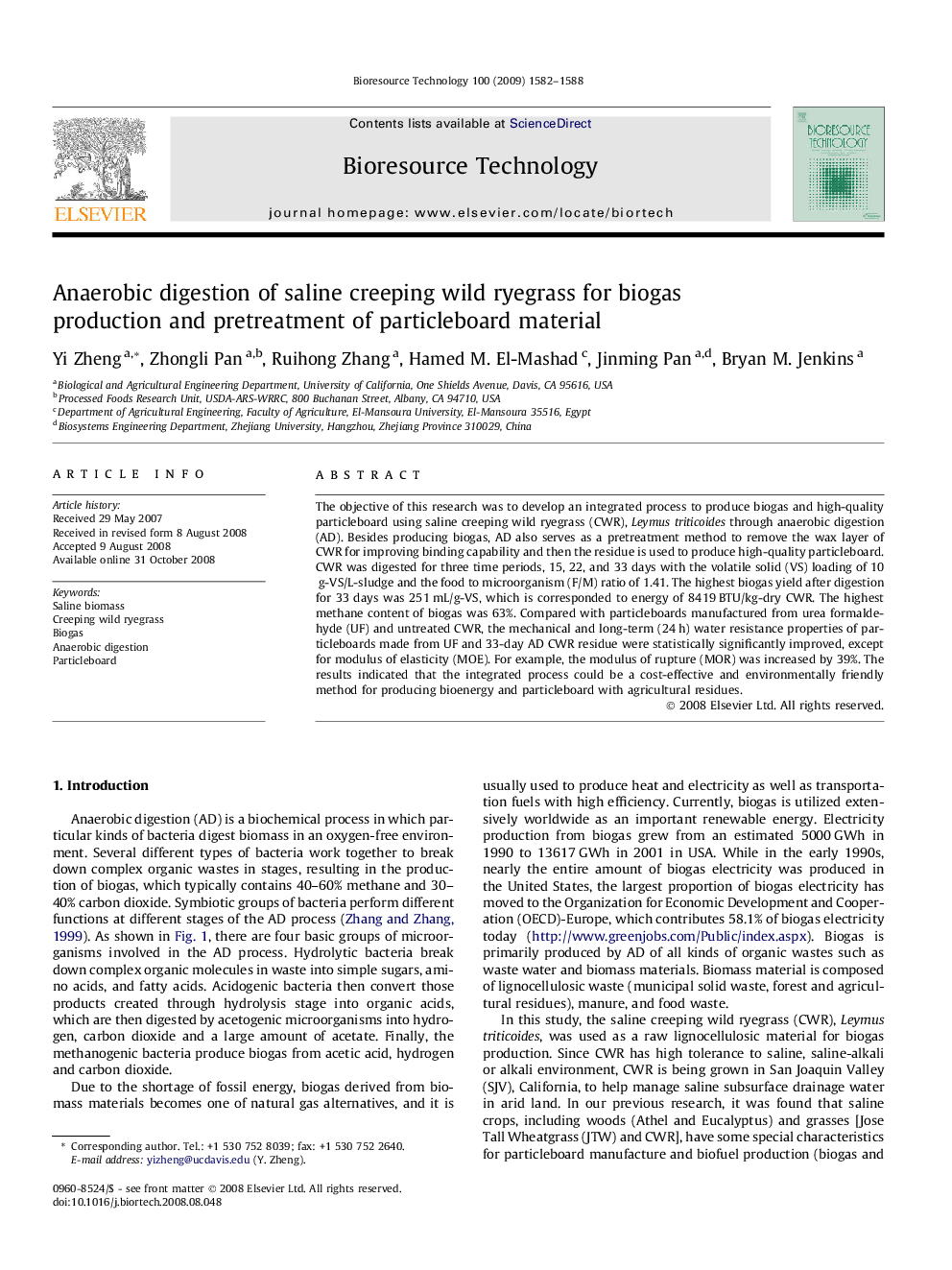| Article ID | Journal | Published Year | Pages | File Type |
|---|---|---|---|---|
| 686043 | Bioresource Technology | 2009 | 7 Pages |
The objective of this research was to develop an integrated process to produce biogas and high-quality particleboard using saline creeping wild ryegrass (CWR), Leymus triticoides through anaerobic digestion (AD). Besides producing biogas, AD also serves as a pretreatment method to remove the wax layer of CWR for improving binding capability and then the residue is used to produce high-quality particleboard. CWR was digested for three time periods, 15, 22, and 33 days with the volatile solid (VS) loading of 10 g-VS/L-sludge and the food to microorganism (F/M) ratio of 1.41. The highest biogas yield after digestion for 33 days was 251 mL/g-VS, which is corresponded to energy of 8419 BTU/kg-dry CWR. The highest methane content of biogas was 63%. Compared with particleboards manufactured from urea formaldehyde (UF) and untreated CWR, the mechanical and long-term (24 h) water resistance properties of particleboards made from UF and 33-day AD CWR residue were statistically significantly improved, except for modulus of elasticity (MOE). For example, the modulus of rupture (MOR) was increased by 39%. The results indicated that the integrated process could be a cost-effective and environmentally friendly method for producing bioenergy and particleboard with agricultural residues.
